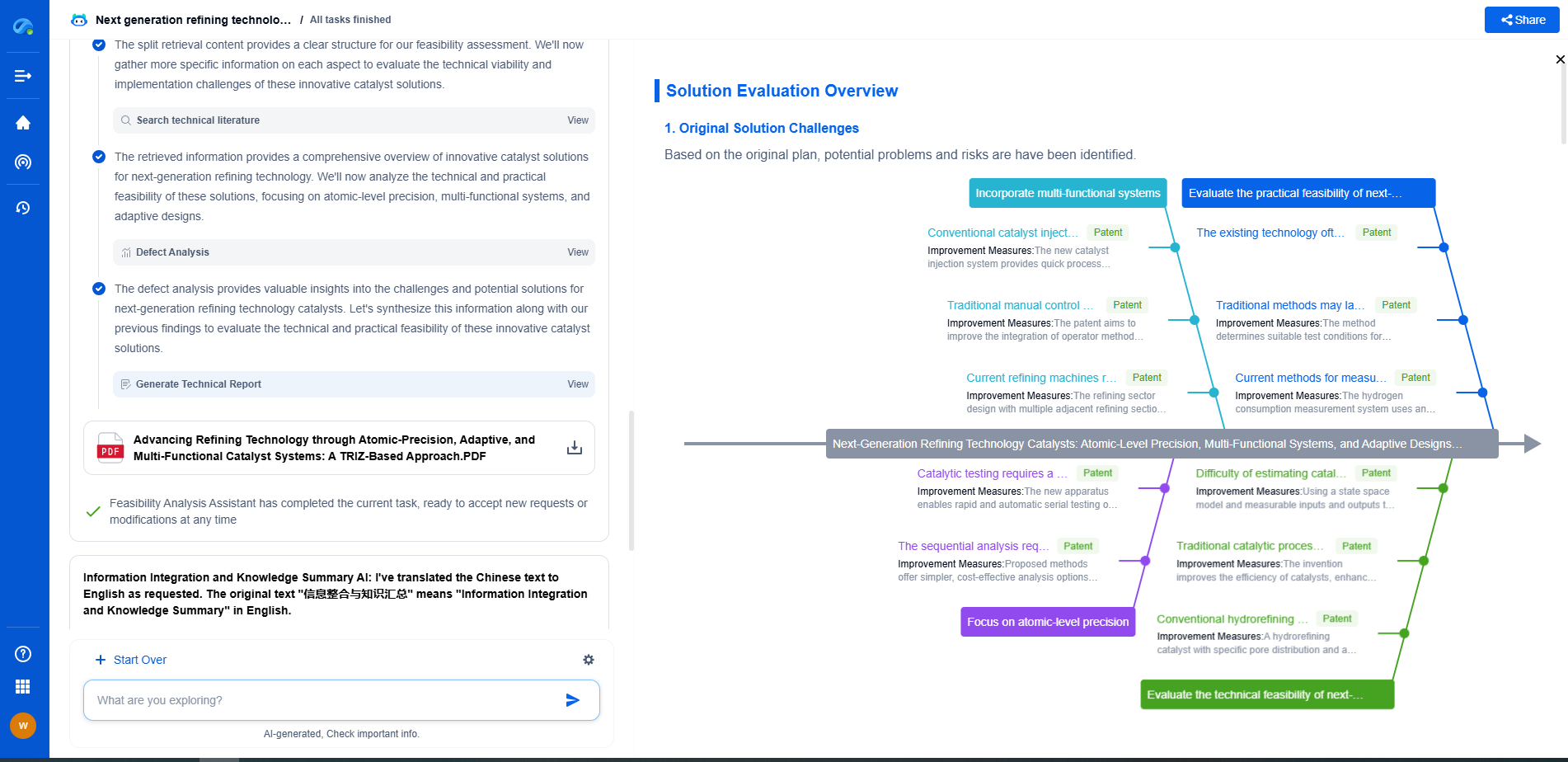What is robotic deburring in precision processing?
JUN 26, 2025 |
In the world of precision processing, achieving flawlessness in components is critical. Even the minutest imperfection can compromise the functionality and aesthetic of a product. Among these imperfections, burrs—tiny imperfections or rough edges formed on metal, plastic, or other materials during manufacturing—are particularly challenging. This is where robotic deburring comes into play, transforming the precision processing industry by offering a solution that combines efficiency, reliability, and precision.
Understanding Burrs and Their Impact
Burrs are common in manufacturing processes such as machining, drilling, and milling. These unwanted materials or projections can lead to various issues, including assembly problems, increased wear and tear on components, and compromised safety. Traditionally, deburring—removing these imperfections—has been a manual, labor-intensive process. However, with advancements in technology, the introduction of robotic deburring has revolutionized how industries tackle this essential task.
The Evolution to Robotic Deburring
Initially, deburring was performed manually, requiring skilled labor to painstakingly remove burrs using tools like files, sandpaper, or grinders. Despite its effectiveness, manual deburring is time-consuming, inconsistent, and poses risks of human error and injury. Recognizing these limitations, manufacturers began to explore automation solutions, leading to the development of robotic deburring systems.
Robotic deburring utilizes robotic arms equipped with various tools and end-effectors specially designed to identify and remove burrs. These systems are programmed to execute precise movements, ensuring every part of a component is thoroughly and accurately deburred. This technology not only enhances consistency but also significantly boosts productivity by reducing cycle times and labor costs.
Key Advantages of Robotic Deburring
1. Precision and Consistency: Robots can perform tasks with remarkable accuracy, ensuring uniform quality across batches. This level of precision is difficult to achieve consistently with manual deburring.
2. Increased Efficiency: Robotic deburring systems can operate continuously without breaks, leading to higher throughput rates and a more streamlined production process.
3. Enhanced Safety: By automating the deburring process, companies can minimize the risk of workplace injuries associated with manual deburring, such as cuts, repetitive strain, and exposure to hazardous materials.
4. Cost-Effectiveness: Although the initial investment in robotic systems can be significant, the long-term savings in labor costs, material waste, and reduced downtime often outweigh the expenses.
Applications Across Industries
Robotic deburring finds applications in a wide range of industries, each benefiting from its precision and efficiency. In the automotive industry, for instance, it plays a significant role in ensuring the high-quality finish of engine components and body parts. Similarly, in aerospace, where tolerance levels are extremely tight, robotic deburring helps maintain the integrity and performance of critical components. The electronics and medical device industries also leverage this technology to meet stringent quality standards and ensure the reliability of their products.
Challenges and Considerations
Despite its advantages, robotic deburring is not without challenges. Implementing these systems requires a significant upfront investment and a skilled workforce to program and maintain the robots. Additionally, the complexity of components and variations in burr formations may demand highly customized solutions. Manufacturers must carefully evaluate their specific needs and capabilities before integrating robotic deburring into their processes.
Conclusion
Robotic deburring represents a significant advancement in precision processing, offering a powerful solution to the persistent problem of burrs. By enhancing precision, efficiency, and safety, robotic systems are transforming industries and setting new standards for quality and reliability. As technology continues to advance, the adoption of robotic deburring is likely to become even more widespread, shaping the future of manufacturing and precision processing.
Ready to Redefine Your Robotics R&D Workflow?
Whether you're designing next-generation robotic arms, optimizing manipulator kinematics, or mining patent data for innovation insights, Patsnap Eureka, our cutting-edge AI assistant, is built for R&D and IP professionals in high-tech industries, is built to accelerate every step of your journey.
No more getting buried in thousands of documents or wasting time on repetitive technical analysis. Our AI Agent helps R&D and IP teams in high-tech enterprises save hundreds of hours, reduce risk of oversight, and move from concept to prototype faster than ever before.
👉 Experience how AI can revolutionize your robotics innovation cycle. Explore Patsnap Eureka today and see the difference.
- R&D
- Intellectual Property
- Life Sciences
- Materials
- Tech Scout
- Unparalleled Data Quality
- Higher Quality Content
- 60% Fewer Hallucinations
Browse by: Latest US Patents, China's latest patents, Technical Efficacy Thesaurus, Application Domain, Technology Topic, Popular Technical Reports.
© 2025 PatSnap. All rights reserved.Legal|Privacy policy|Modern Slavery Act Transparency Statement|Sitemap|About US| Contact US: help@patsnap.com

